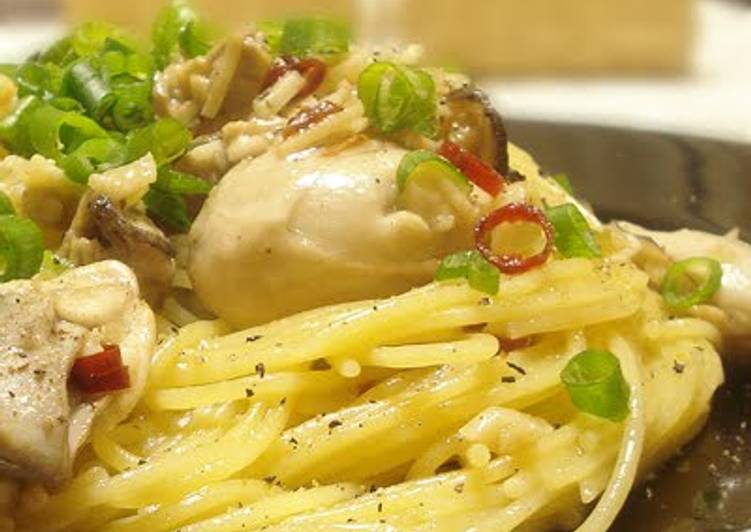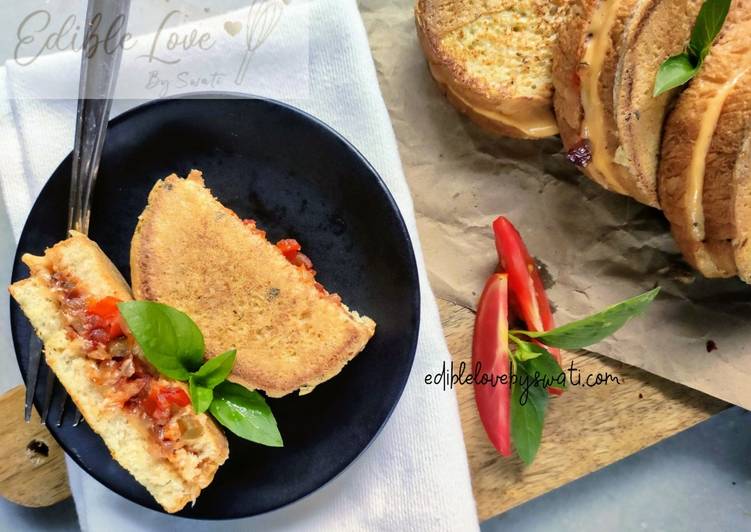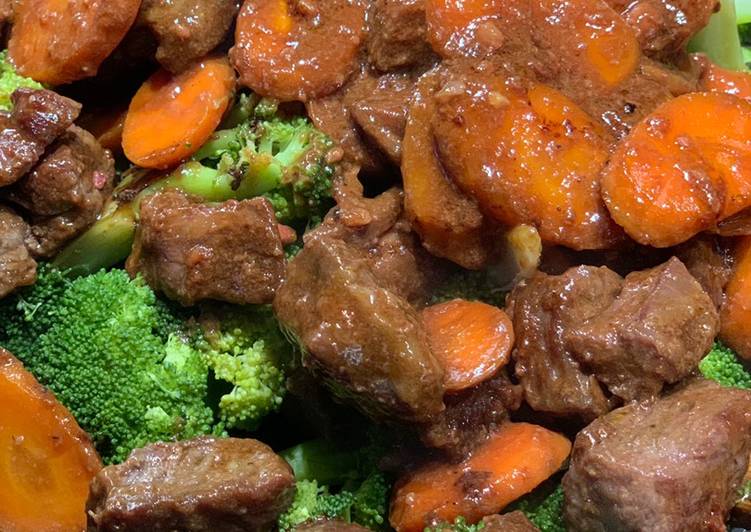
Hey everyone, I hope you are having an amazing day today. Today, we’re going to prepare a special dish, vongole bianco with oysters and olive oil. One of my favorites food recipes. For mine, I will make it a bit unique. This is gonna smell and look delicious.
Vongole Bianco with Oysters and Olive Oil Recipe by cookpad.japan - Cookpad Vongole Bianco with Oysters and Olive Oil I prefer to cook oysters with good-quality extra virgin olive oil, garlic and rock salt. This is why I made an "oyster bianco" pasta. Add the clams, give the pan a good shake and cover with a lid.
Vongole Bianco with Oysters and Olive Oil is one of the most well liked of current trending foods in the world. It’s appreciated by millions every day. It’s simple, it is quick, it tastes delicious. They’re nice and they look wonderful. Vongole Bianco with Oysters and Olive Oil is something which I have loved my entire life.
To begin with this particular recipe, we must prepare a few ingredients. You can cook vongole bianco with oysters and olive oil using 12 ingredients and 27 steps. Here is how you cook that.
The ingredients needed to make Vongole Bianco with Oysters and Olive Oil:
- Make ready 1 Oysters
- Get 90 to 100 grams Pasta (1.4 to 1.6 mm)
- Get 30 ml Extra virgin olive oil…A
- Make ready 1 to 2 cloves Garlic (chopped)…A
- Take 1 to your taste Red chili (sliced)
- Make ready 50 ml White wine or sake *Do not use cooking sake
- Make ready 5 grams Salted butter
- Prepare 1/4 to 1/2 teaspoon Plain flour…B
- Make ready 20 to 30 ml Water…B
- Make ready 20 to 30 ml Pasta cooking liquid…B
- Take 1 Salt and pepper
- Take 1 Black pepper (whole or coarsely ground)
Italians cook this dish in two way in bianco - olive oil, garlic, chilli and parsley and in rosso - olive oil, garlic, parsley, tomatoes and chilli. My favourite pasta with clams is using cherry tomatoes, just gives that bit of colour and subtle flavour. Italians prepare this dish two ways: in bianco, i.e., with oil, garlic, parsley, and sometimes a splash of white wine; and in rosso, like the former but with tomatoes and fresh basil, the addition of tomatoes being more frequent in the south. Traditionally, the bivalves are cooked quickly in hot olive oil to which plenty of garlic has been added.
Steps to make Vongole Bianco with Oysters and Olive Oil:
- Clean the oysters well. Take 1 or 2 small ones and chop roughly.
- Look at Takuno-san's easy way to clean oysters. - - https://cookpad.com/us/recipes/148389-how-to-rinse-oysters-to-a-glossy-finish
- Put 3 L of water into a large pot and bring to the boil. Just before it comes to the boil add 2 tablespoons of salt (1% of salt to the water).
- The sodium content in the water from the pot in Step 3 is an important factor in deciding the resultant taste so measure the amount of salt precisely. After bringing the pot to the boil, keep it over a very low heat.
- Put A ingredients into a cold frying pan. Place the pan over a low heat. Cook slowly to infuse the garlic flavour into the oil.
- When it starts to bubble around and the garlic becomes fragrant, add the red chili before the garlic is golden brown.
- Add the chopped oyster from Step 1.
- When the Step 7 garlic is golden brown add the butter. Turn the heat to medium and add the rest of the oysters.
- Add salt and pepper. Cover with a lid and steam the oysters, keeping the heat constant.
- Meanwhile put the pasta in and drain 30 seconds to 1 minute earlier than the package instruction says until al dente. Cook over a low heat.
- If you boil the pasta cooking liquid vigorously the liquid will evaporate fast and the pasta will be salty.
- [Note:] Do not boil the water vigorously before or after you put the pasta in.
- Before the oysters are cooked through, add B ingredients and stir well. Measure the pasta cooking liquid with a measuring spoon and pour in.
- After the oysters from Step 9 are cooked through turn off the heat. When you see the oysters are plump and the edges are shrunk the oysters are done.
- Just before the pasta is cooked add Step 13 and Step 14. Cook over a medium heat. Move the frying pan around for 15 seconds.
- [Note:] At Step 15 when the sauce starts to thicken turn off the heat. The sauce is emulsified.
- To make the pasta dish with olive oil-based sauce the emulsion of the sauce is very important. You cook a small amount of pasta at home so you don't get enough starch in the pasta cooking liquid to emulsify the sauce.
- By adding the flour it helps the sauce to emulsify. You will have a restaurant-quality sauce in this way.
- I usually use a mixture of pasta cooking liquid and flour but here I used pasta cooking liquid, water and salt to moderate the salt taste.
- The ratio of water and pasta cooking liquid amount differs according to the amount of white wine and your taste. Do not reduce the sauce too much otherwise the sauce will be very salty.
- After the pasta boils, drain the pasta and add it to the oysters from Step 15 (over low-medium heat).
- Sprinkle with coarsely ground pepper. Add more salt if necessary.
- Sprinkle with Italian parsley. I like green onion with oysters so here I used green onion to garnish.
- This is a simple dish but it is tasty with plenty of garlic and fragrant white wine. You will enjoy the tasty oysters
- It is easy but really tasty. Serve with chilled white wine.
- This is Pasta in Clam Soup. Enjoy the tasty clam soup.
- This is an authentic Bongole Bianco (Recipe: ID 1387665).
Spaghetti alle vongole, an Italian classic, is a light yet flavorful pasta infused with garlic, briny clams, white wine, and chili flakes. This white version (in bianco), made without tomato, is a quick lunch or dinner that's as easy as it is delicious. Add the clams, clam juice and wine. This is why I made an "oyster bianco" pasta. Add the drained clams, and turn up the heat.
So that is going to wrap this up with this exceptional food vongole bianco with oysters and olive oil recipe. Thank you very much for reading. I’m confident you can make this at home. There is gonna be more interesting food at home recipes coming up. Remember to bookmark this page in your browser, and share it to your loved ones, friends and colleague. Thanks again for reading. Go on get cooking!

